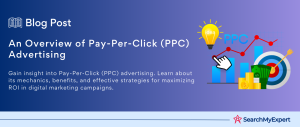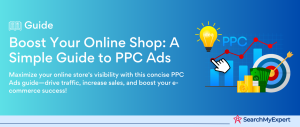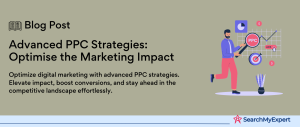Understanding Seasonal PPC and Its Critical Role in Digital Marketing
Seasonal Pay-Per-Click (PPC) advertising refers to the strategy of creating and optimising online ads that target specific seasons, holidays, or events. This approach is crucial for businesses seeking to capitalise on the fluctuating consumer interests and behaviours that accompany different times of the year. Seasonal PPC campaigns can be a potent tool for businesses to boost their online presence, increase traffic, and drive sales during peak seasons.
The Challenges and Opportunities of Seasonal PPC Campaigns
Managing seasonal PPC campaigns presents unique challenges and opportunities. Advertisers need to navigate fluctuating search volumes, varying cost-per-click (CPC) rates, and changing consumer behaviours. However, these challenges also present opportunities:
- Increased Engagement:
Consumers actively search for season-specific products and offers, leading to higher engagement rates. - Competitive Advantage:
Businesses that effectively leverage seasonal trends can stand out from competitors. - Enhanced Brand Recall:
Seasonal campaigns can create memorable experiences, fostering long-term customer loyalty.
Embracing Seasonal PPC: A Strategic Imperative
Incorporating seasonal PPC into your digital marketing strategy is essential for several reasons:
- Timely Relevance:
Aligning your marketing efforts with seasonal events ensures your ads are relevant and appealing to your target audience. - Maximising ROI: By focusing your advertising efforts on peak times, you can maximise your return on investment (ROI).
- Building Brand Awareness: Seasonal campaigns can help reinforce your brand’s presence and values in a way that resonates with the seasonal sentiments of your audience.
Understanding Seasonal Trends in PPC
Seasonal PPC trends play a crucial role in digital advertising, impacting everything from search volume to conversion rates. Here’s how you can analyze and leverage these trends:
Identifying Seasonal Patterns in Search Volume, CPCs, and Conversion Rates
- Historical Data Analysis: Your first step should be to review historical data to spot patterns in search volume, conversion rates, and cost-per-click (CPC) during different times of the year. This analysis reveals when your products or services are most in demand.
- Peaks and Troughs in Search Volume:
Utilise tools like Google Trends to identify when searches for your business-related keywords peak. This insight helps determine when to increase or decrease your ad spend. - Conversion Rates and CPC Monitoring:
Comparing conversion rates and CPC across different seasons can provide insights into the effectiveness of your campaigns during specific periods.
Utilising Tools for Analysing Seasonal Trends
- Google Trends: This tool is indispensable for understanding seasonal peaks and troughs in search volumes. It allows you to investigate search terms, time ranges, and locations, helping you align your PPC strategies with the highest search volumes.
- Google Analytics:
A robust tool for getting a comprehensive view of trends over the year. By building custom reports, you can view data by month and understand how your audience’s behaviour changes seasonally. - AdWords Data and Auction Insights:
Reviewing past performance data from your PPC accounts can provide valuable insights. Segmenting data by quarter or month in AdWords helps you understand past trends and adjust your current strategies accordingly. - Competitor Analysis: Use tools like Auction Insights, SpyFu, and SEMrush to see what your competitors are doing. Understanding their seasonal strategies and budget trends can guide your own PPC tactics.
Strategic Implications of Seasonal Trends
Understanding these trends allows you to:
- Align Campaigns with Consumer Interest:
By analysing when and how consumer interests change, you can tailor your campaigns to be more relevant and engaging. - Optimise Budget Allocation:
Adjust your budget to capitalise on peak seasons and conserve resources during slower periods. - Stay Competitive: Keep an eye on competitor strategies and adjust your campaigns to maintain a competitive edge.
Planning and Budgeting for Seasonal PPC
Effective planning and budgeting are key to the success of seasonal PPC campaigns. Here’s a comprehensive guide to help you navigate this process:
Setting Clear Goals and Objectives for Seasonal PPC
- Initial Step: Goal setting is the most important step in launching a PPC campaign. It helps determine your strategy and workflow. Reflect on your business goals to set specific objectives for your paid ads campaigns and budget.
- Business Needs Assessment:
Understand your business needs to identify your goals for PPC campaigns. Consider why your business needs a pay-per-click strategy and how it aligns with your overall business goals. - Short- and Long-Term Goals:
Set both short-term (weekly, bi-weekly, monthly) and long-term (quarterly, annually) goals. This helps in creating benchmarks and determining the overall performance of your PPC strategy.
Determining Budget Allocation Based on Historical Data and Seasonal Trends
- Account for Seasonality: Adjust your budget allocation to match seasonal performance variations. Spend more during high-performance periods and conserve during slower months.
- Data Analysis:
Start with at least two years of historical data on clicks and conversions. Segment this data by month to identify trends and variances. - Budget Calculation Process:
- Segment click and conversion data by month.
- Create a pivot table with this data to calculate monthly conversion rates.
- Determine each month’s conversion rate difference from the overall average.
- Divide your annual budget by 12 and adjust each month’s allocation based on its conversion rate performance.
Comprehensive Approach to Seasonal PPC Campaigns
Incorporating these elements into your planning and budgeting process can significantly enhance the effectiveness of your seasonal PPC campaigns:
- Consider Various Factors:
When compiling your strategy, consider products/services to promote, budget, promotions, ad platforms, campaign duration, target audience, and desired results. - Early Planning:
Begin planning your PPC campaign at least a couple of weeks before the start of the busy season to allow ample time for preparation and adjustments.
Optimising Keyword Targeting for Seasonal Relevance
Effectively targeting keywords is crucial for the success of seasonal PPC campaigns. Here are strategies to enhance keyword targeting:
Personalizing Ad Copy and Refining Keyword Lists
- Ad Customization:
Customise your ad text, keywords, and landing pages to stay relevant and engaging. This includes adapting your messaging to fit seasonal themes and consumer interests. - Commercial Keywords Focus:
During seasonal peaks, prioritise commercial keywords over informational ones to ensure higher conversion rates. Including keywords that gain traction during holidays can make your CPCs more efficient and improve ad reach.
Catching Early Shoppers and Utilising Images
- Plan Ahead: Think a season ahead and plan your campaigns about 3 months in advance. This allows time to tweak your campaign and maximise your budget at the right time.
- Visual Impact: Use images that match your ad copy to send a strong subconscious signal about your offer, enhancing seasonal relevance.
Adjusting Daily Budget for Seasonal Demand
- Budget Management:
Be prepared for increased impressions during holidays, necessitating a higher budget to maintain visibility and competitiveness.
Creating Separate Ad Groups for Seasonal Keywords
- Ad Group Structure: Group related keywords and write ads around a common theme. For example, distinct products like “high heels” and “running shoes” should have separate ad groups with targeted ad copy and landing pages.
Monitoring and Adjusting Keyword Performance
- Keyword Bidding: Regularly monitor and adjust your keyword bids to ensure optimal ranking and performance. Utilise automation tools, focus on high-value keywords, and make data-driven decisions
Tailoring Ad Copy and Landing Pages for Seasonal Appeal
Seasonal appeal in PPC campaigns is crucial to capture the attention of your target audience. Here’s how to tailor your ad copy and landing pages effectively:
Importance of Optimising PPC Landing Pages
- Crafting High-Quality Landing Pages:
A well-optimised landing page is essential for converting visitors. It should be tailored to target keywords, personas, and offerings to guide visitors towards a compelling call to action.
Using the Power of Keywords on Landing Pages
- Incorporating Keywords: Feature your target keywords strategically throughout the landing page – in headlines, subheadlines, calls to action (CTAs), and bullet points. This ensures your content aligns with your ad copy, creating a seamless visitor experience.
Leveraging Visual Storytelling
- Visual Engagement:
Use images, videos, or both to showcase your product or service. Organise the content in an F-shaped pattern to align with how people usually scan pages, placing essential information at the top.
Creating an Action-Driving Conversion Point
- Clear and Strong CTA:
Your landing page should have a clear CTA that is easily visible (above the fold), free from distractions, and repeated at strategic intervals on long pages. Use value-driven language in your CTAs to entice visitors to take action.
Adjusting Bids and Budget During Seasonal Fluctuations
Effectively managing bids and budgets is crucial for seasonal PPC campaigns. Here are strategies for making these adjustments:
Adjusting Your Daily Budget
- Increased Demand: During peak holiday times, impressions can rise significantly, sometimes by as much as 350%. This increased demand necessitates a corresponding increase in budget to remain competitive in keyword auctions.
- Balancing CPC and Conversions:
The landscape becomes more competitive with higher max CPCs during these periods. However, the increase in conversion rates and sales during holidays justifies the rise in CPCs. The key is to maintain a balance – increase your budget to stay visible but avoid overspending to the point of losses.
Maximising Seasonal PPC Performance with Automated Bidding
- Proper Budget Allocation:
Ensure that your budget is sufficient to fully capitalise on seasonal opportunities. Review past spending and anticipate current demand to set your budget appropriately. - Value vs. Volume Strategy:
During high search volume and conversion periods, set clear targets for CPA (Cost Per Acquisition) or ROAS (Return On Ad Spend). Adjust these targets as needed to maximise sales and traffic without missing out on incremental opportunities. - Short Campaign Strategies: For campaigns shorter than 7 days, use relaxed targets for automated bidding strategies like Target CPA or ROAS. This allows for quicker optimization and capturing of short-term opportunities.
- Utilising Max Conversions or Max Conversion Value:
These bidding strategies can effectively handle both long-term trends and short-term bursts, requiring no changes to take advantage of seasonal fluctuations. - Adjusting for Short Burst Changes: If expecting a significant change in conversion rate within a short period (30%+ within 3 days), provide additional information to the bidding algorithm or implement Google’s seasonality adjustments.
Tracking and Measuring Seasonal PPC Performance
To effectively measure and optimise seasonal PPC campaigns, it’s crucial to understand and monitor various key performance indicators (KPIs). Here are the strategies for tracking and measuring PPC performance:
Understanding Reporting Metrics
- Key Metrics: These include impressions (how many times ads were served), clicks (user engagements with ads), click-through rate (CTR), average CPC (cost per click), average position on the SERP, conversions, conversion rate, and Quality Score. These metrics provide a comprehensive view of your campaign’s performance.
Analysing Data to Refine Strategy
- Continuous Analysis: Analysing data from metrics like CTR and CPC is essential for understanding what aspects of your campaign are working and what needs improvement. This ongoing analysis enables you to make informed adjustments to your strategy.
Key Performance Indicators (KPIs) to Track
- Essential KPIs:
Important KPIs include CTR, cost per click, cost per conversion, conversion rate, ROAS (Return On Ad Spend), Quality Score, ad quality, and average order value. These indicators provide insights into engagement, effectiveness, cost management, and profitability.
Conclusion
By understanding and monitoring a comprehensive set of metrics and KPIs, you can effectively track and measure the performance of your seasonal PPC campaigns. Regular analysis of these indicators allows you to make data-driven decisions, optimising your campaigns for higher engagement, better conversion rates, and improved ROI. This strategic approach to tracking and measurement is essential for maximising the success of your seasonal PPC efforts.
Amplify your online presence with our expert PPC Agencies.
Table of Contents
Toggle






